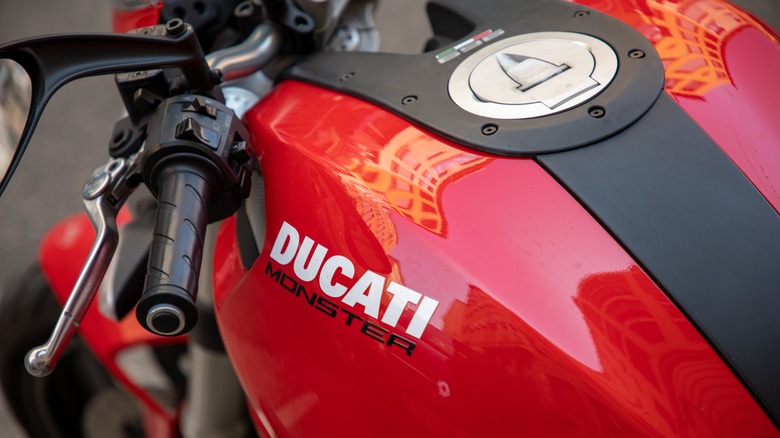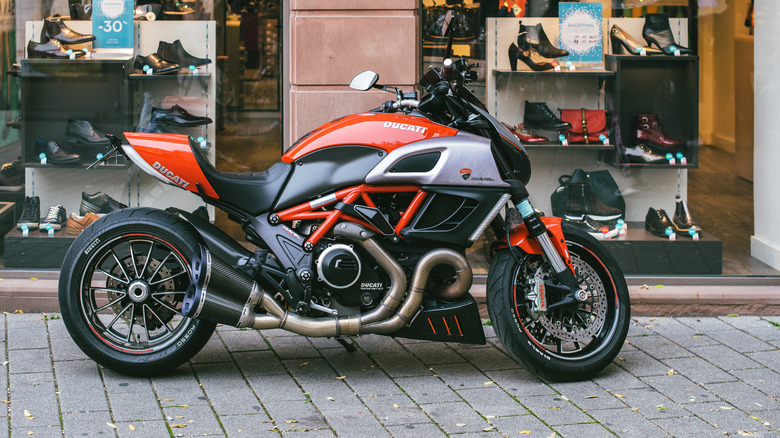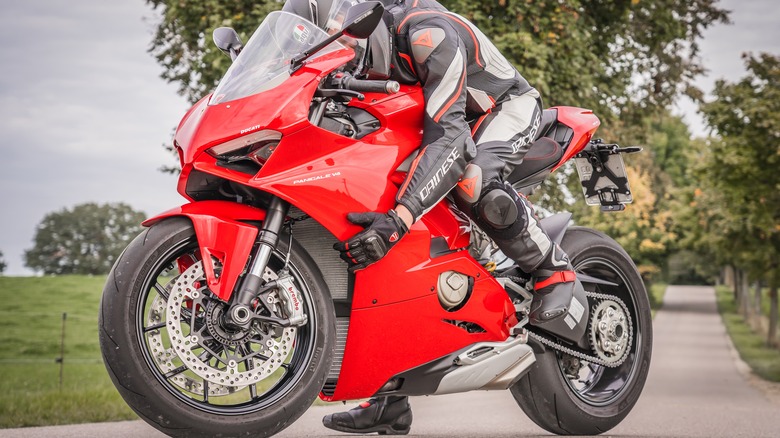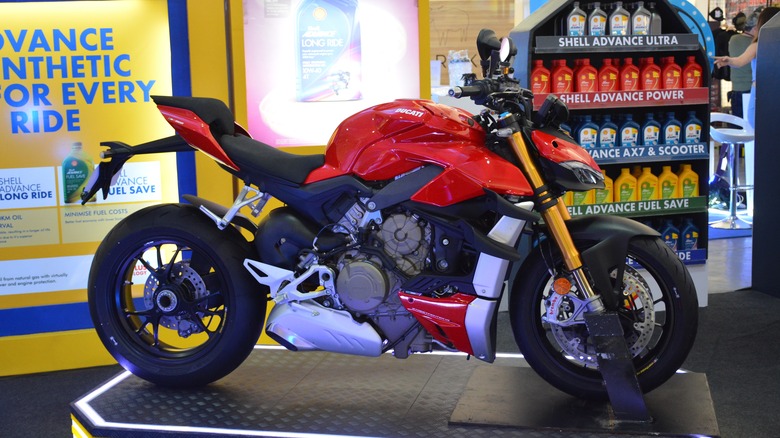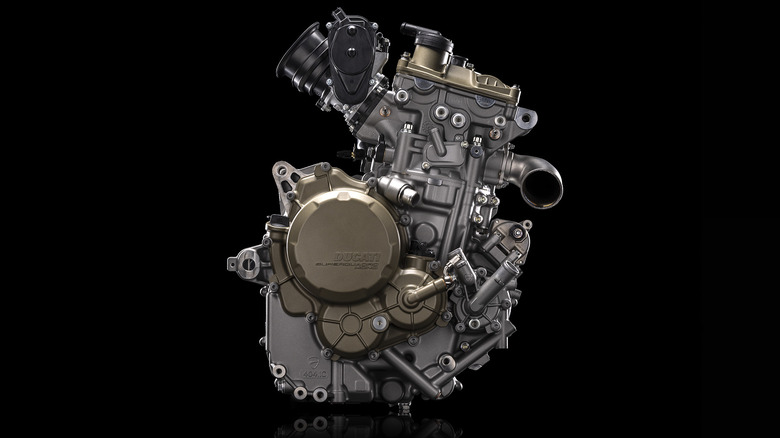Where Are Ducati Motorcycle Engines Built?
The revered Ducati name is recognized globally as one of the best motorcycle and engine manufacturers. However, Ducati didn't start making two-wheeled motorized machines until the end of World War II. The Ducati brand began when Adriano Cavalieri Ducati patented the first short-wave radio transmitter to connect Italy to the United States.
Riding on the success of his invention, Ducati founded the Società Scientifica Radio Brevetti Ducati with sons Adriano, Bruno, and Marcello in 1926. The company expanded quickly from making Manens capacitors to radio equipment and offering precision machining services in 1935, just when operations shifted from the original Viale Guidotti 51 factory to the current Borgo Panigale plant in Bologna, Italy.
Ducati launched its first motorcycle, the Cucciolo, in 1946. It was the first motorcycle product that Ducati manufactured at the Borgo Panigale factory. Fast forward to today, Ducati still manufactures its engines and motorcycles at Borgo Panigale in Bologna, Italy. However, Ducati has since expanded its manufacturing facilities to Argentina, Brazil, and Thailand to satisfy market demands.
Are all Ducatis made in Italy?
Ducati recently inaugurated its newest factory in Rayong, Thailand. It's the brand's first production facility in the ASEAN region. It also serves as Ducati's primary export hub in the area and will export Ducati motorcycles to Italy, Germany, the U.K, the U.S., and Asia-Pacific countries.
Despite its projected growth on the other side of the planet, Ducati remains a true-blue (or red) Italian brand. The Ducati headquarters are in Bologna, Italy, and its Borgo Panigale manufacturing facility houses the Ducati Museum on Via Cavalieri Ducati 3. Reports claim Borgo Panigale builds 84% of Ducati motorcycles, while Argentina, Thailand, and Brazil factories make up the rest.
Ducati motorcycles are exotic machinery, which could only mean two things: Ducatis are among the most expensive bikes across all segments and among the most eye-catching (and best-sounding) crotch rockets for the money. But the beating heart of every Ducati is the engine.
Ducati Desmosedici Stradale V4
Ducati motorcycles have cherished racing DNA. The engine that powers the latest Ducati sport bikes, like the Panigale V4 and Superleggera, is the Desmosedici Stradale 90° V4. It's a four-cylinder 90-degree V engine rotated 42° rearward for a more compact design. It has 1.1 liters of displacement and Ducati's latest-generation Desmodromic valvetrain that governs four valves per cylinder.
The Desmosedici Stradale could rev as high as 14,000 rpm while producing 210 horsepower (at 13,000 rpm) and 88.5 lb-ft of torque from 8,750 to 12,250 rpm. Tipping the scales at around 143 lbs. (64.9 kg), the next-gen Desmosedici Stradale is only 4.85 lbs. heavier than Ducati's older Superquadro twin engine despite having more power.
Best of all, Ducati engineered the Desmosedici Stradale to deliver longer maintenance intervals. The bike maker recommends general servicing every 12 months or 7,500 miles, while valve clearance adjustments are required every 15,000 miles. The most potent iteration is the Desmosedici Stradale R in the Ducati Panigale V4 R, capable of producing up to 218 horsepower while spinning at a screaming 16,500 rpm.
Ducati V4 Granturismo
The Ducati V4 Granturismo engine is a reconfigured version of the Desmosedici Stradale V4 and makes do without the Desmodromic valvetrain. Instead, it has a redesigned spring valve return system for better performance and longer maintenance intervals. It's a 90° four-cylinder V engine with 1.15 liters of displacement that weighs 2.7 lbs. less than a two-cylinder Ducati Testastretta DVT twin-cylinder motor.
Despite its compact and lightweight design, the V4 Granturiso is a powerhouse. It could produce up to 170 hp at 10,500 rpm and 92 lb-ft of torque at 8,750 rpm, all while complying with strict Euro 5 emissions guidelines. It also adopts the counter-rotating crankshaft design and twin-pulse ignition technology of the Desmosedici Stradale, helping optimize the smoothness and power delivery at any engine speed.
Moreover, the Ducati V4 Granturismo engine has an industry-best 37,300-mile valve clearance adjustment interval. The V4 Granturismo is Ducati's engine of choice for the Multistrada V4 and Diavel V4.
Ducati single and two-cylinder engines
The newest Ducati engine is the Superquadro Mono, the brand's first single-cylinder engine since debuting the Supermono 550 in over thirty years. Based on the Panigale 1299 and 1285 cc Superquadro, it has titanium intake valves, steel exhaust valves, and Ducati's Desmodromic system.
The Superquadro Mono is unique with its long bore and extremely short stroke, enabling it to spin like a racing engine. It produces 77.5 hp at 9,750 rpm and could spin up to 10,250 rpm. When equipped with a bespoke Termignoni racing exhaust, it could produce up to 85 horsepower at 9,500 rpm. The Superquadro Mono is available in the Ducati Hypermotard 698 Mono and Mono RVE.
The most versatile Ducati engine is the Testastretta 11° in the DesertX, DesrtX Rally, Monster+, Supersport 950, Hypermotard 950 SP, and Multistrada V25. Meanwhile, the Testastretta DVT (Desmodromic Valve Timing) is available for the Ducati XDiavel and XDiavel Nera. The Testrastretta 11° is a liquid-cooled twin-cylinder engine with an 11-degree valve overlap to produce up to 111 horsepower.
